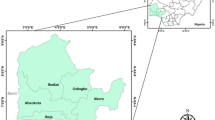Abstract
Thermal comfort is a subjective experience in which the human body feels satisfied with the thermal environment. The human thermal sensation is mainly related to the heat balance of the whole body. This balance is not only affected by environmental parameters such as air temperature, average radiant temperature, wind speed and air humidity, but also by human activities and dress. Local thermal discomfort includes evaluation indexes such as draft, vertical temperature difference, ground heating and cooling, and radiation asymmetry. When these parameters are estimated or measured, the overall thermal sensation of the person can be predicted by calculating the predicted mean thermal sensation index (PMV). Internationally, the currently accepted standard for predicting and evaluating indoor thermal environment comfort is ISO 7730-2005 and American Standard ASHRAE 55-2013. In the ISO 7730-2005 standard, the comfort is evaluated for the steady-state and non-steady-state thermal environments. The evaluation of the steady-state environment mainly evaluates the PMV, PPD indicators and local thermal discomfort. The unsteady environment is mainly evaluated from indicators such as temperature cycle and drift. In terms of thermal comfort evaluation, after extensive experiments, the researchers tried to link the four elements that make up the thermal environment (air temperature, humidity, wind speed and ambient average radiant temperature) to the thermal sensation of the human body. However, heat balance is not a sufficient condition for human thermal comfort. The Fanger thermal comfort equation and its evaluation indicators have their limitations. Studies have shown that the actual thermal sensation of the test subjects is significantly higher than the PMV through the thermal comfort survey of winter and summer residential buildings, and pointed out that there is a lack of equations. To this end, this paper carried out a test for the thermal sensation characteristics of Chinese people, conducted thermal comfort tests on nine environmental conditions of refrigeration and heating through 40 subjects of different ages, and determined the differences in thermal sensory characteristics of human body at different ages, analyze the test results and correct the PMV equation according to the results to make it more in line with the physiological characteristics of Chinese people. The test results show that the thermal sensation index of children and the elderly is significantly different, the children’s thermal sensation is obviously cold, while the elderly are obviously warm, and the thermal sensation characteristics of adults with different genders are also different. Men are more like cold than women. When testing for the elderly and children, gender has little effect on the characteristics of thermal sensation, and there is no obvious difference between hot and cold in different genders.
Access this chapter
Tax calculation will be finalised at checkout
Purchases are for personal use only
Similar content being viewed by others
References
Wang, R.: Research and Development Report on the Progress of Refrigeration. Science Press (2007)
ASHRAE. ANSI/ASHRAE 55-2004 Thermal environmental conditions for human ccupancy. American Society of Heating, Refrigerating and Air Conditioning Engineers Inc., Atlanta (2004)
ISO.BS EN ISO 7730-2005 Ergonomics of the thermal environment - Analytical determination and interpretation of thermal comfort using calculation of the PMV and PPD indices and local thermal comfort criteria. International Standards Organization, Geneva (2005)
Cao, J., Zhou, Y.: Thermal comfort equation of Fanger and its application. J. Beijing Inst. Cloth. Technol. 2, 96–101 (1989)
Cabanac, M.: Pleasure and joy, and their role in human life. In: Proceedings of Indoor Air’ 96, Nagoya (1996)
Humphreys, M.A., Fergus Nicol, J.: The validity of ISO-PMV for predicting comfort votes in every-day thermal environments. Energy Build. 34(6), 667–684 (2002)
Charles, K.E.: Fanger’s Thermal Comfort and Draught Models. irc.nrc-cnrc.gc. ca/ircpubs, 2003-10-10
Li, S., Lian, Z.: Discussions on the application of Fanger’s thermal comfortable theory. Shanghai Refrigeration Institute Academic Annual Conference (2007)
Becker, R., Paciuk, M.: Thermal comfort in residential buildings Failure to predict by Standard model. Build. Environ. 44(5), 948–960 (2009)
Singh, M.K., Mahapatra, S., Atreya, S.K.: Adaptive thermal comfort model for different climatic zones of North-East India. Appl. Energy 88(7), 2420–2428 (2011)
Wang, Z., Zhao, J., Liu, J.: Indoor Air Environment. Chemical Industry Press, Beijing (2006)
Liu, J.: Study on indoor thermal environment and human thermal comfort of natural ventilation buildings in hot summer and cold winter areas. ChongQing University, ChongQing (2007)
Acknowledgments
This research is supported by “Special funds for the basic R&D undertakings by welfare research institutions” (522018Y-5984 and 522017Y-5276) and “2017 National Quality Infrastructure (2017NQI) project” (2017YFF0206605).
Author information
Authors and Affiliations
Corresponding author
Editor information
Editors and Affiliations
Rights and permissions
Copyright information
© 2020 Springer Nature Switzerland AG
About this paper
Cite this paper
Wang, R., Zhao, C., Li, W., Qi, Y. (2020). Research on Thermal Comfort Equation of Comfort Temperature Range Based on Chinese Thermal Sensation Characteristics. In: Karwowski, W., Trzcielinski, S., Mrugalska, B. (eds) Advances in Manufacturing, Production Management and Process Control. AHFE 2019. Advances in Intelligent Systems and Computing, vol 971. Springer, Cham. https://doi.org/10.1007/978-3-030-20494-5_24
Download citation
DOI: https://doi.org/10.1007/978-3-030-20494-5_24
Published:
Publisher Name: Springer, Cham
Print ISBN: 978-3-030-20493-8
Online ISBN: 978-3-030-20494-5
eBook Packages: EngineeringEngineering (R0)




